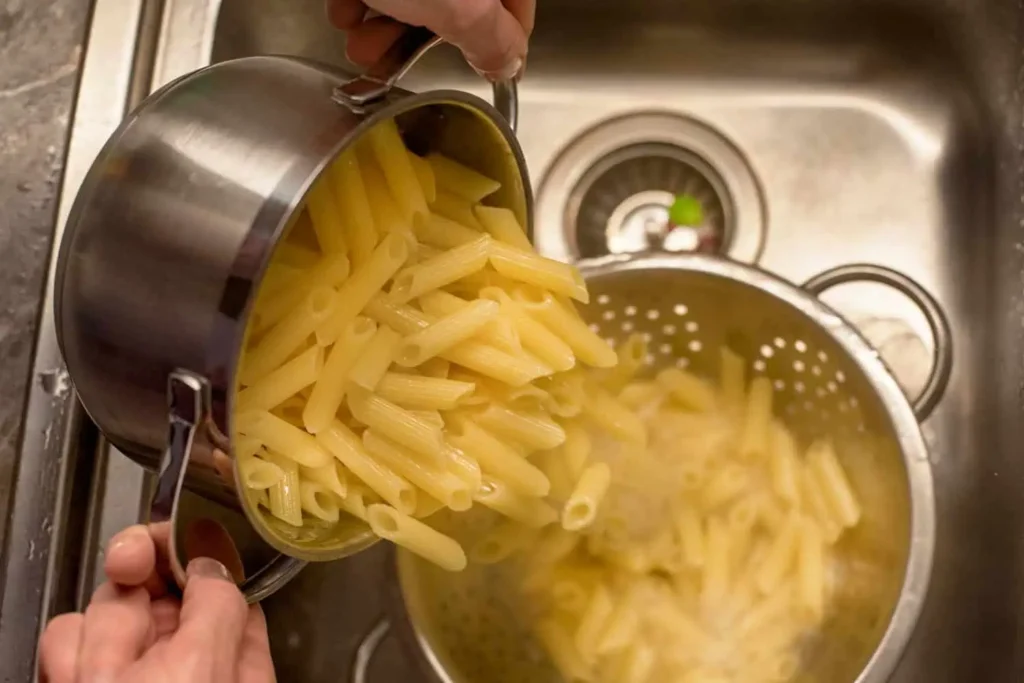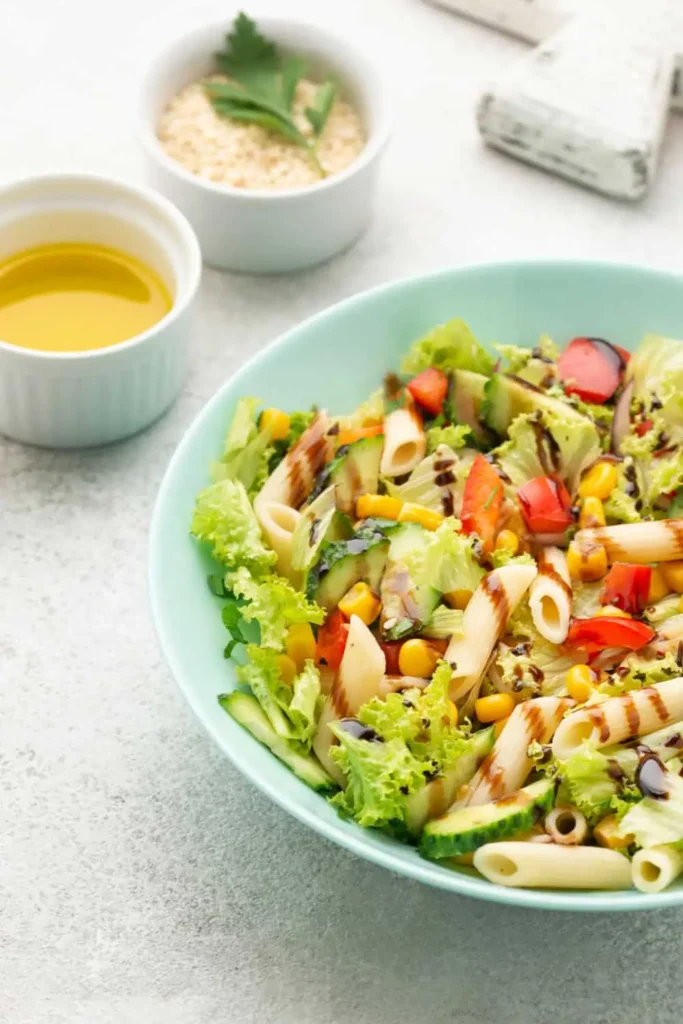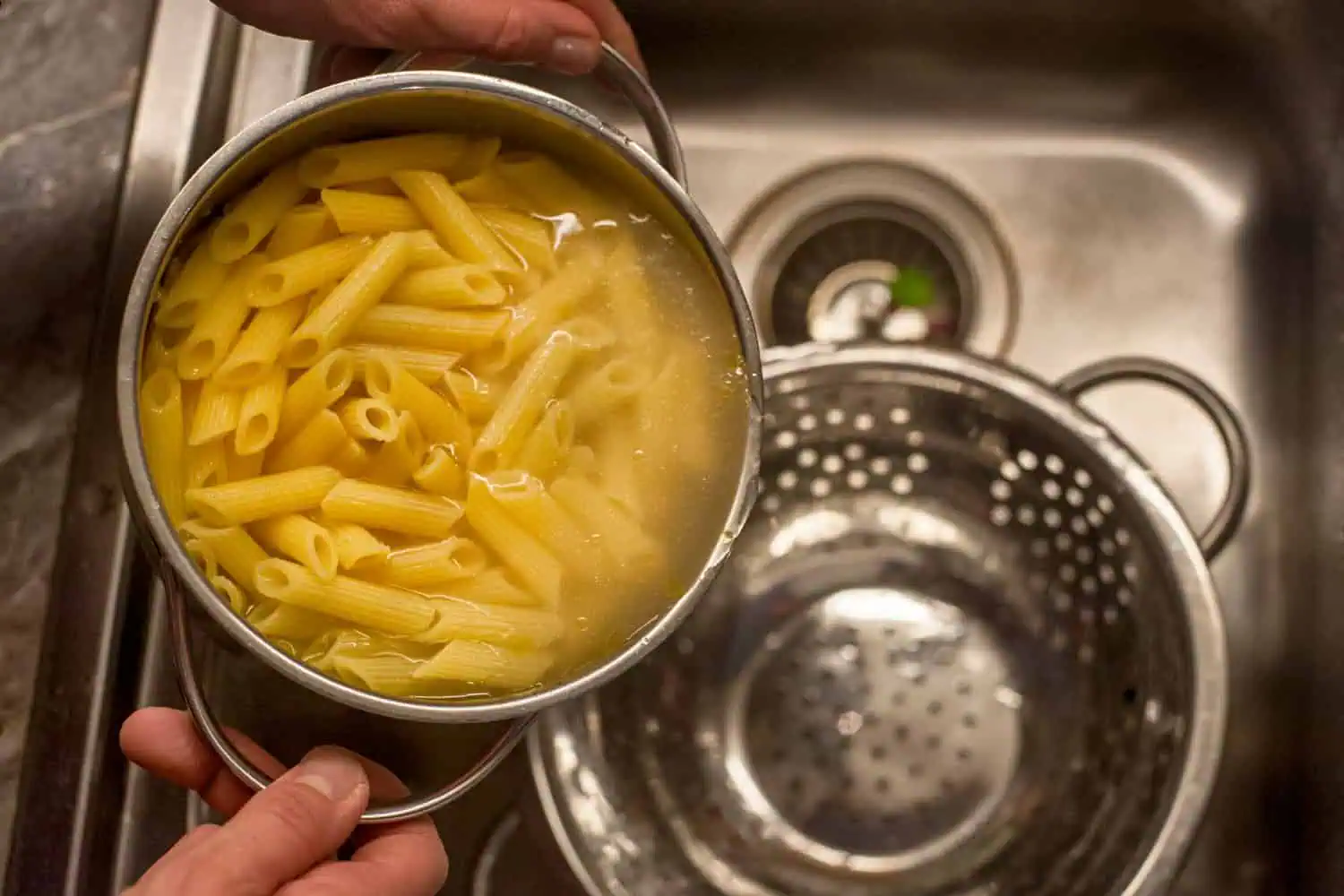When preparing a delicious pasta salad, one of the most common questions home cooks face is whether they should drain pasta for pasta salad. The short answer is yes, you absolutely should drain your pasta, but there’s much more to this crucial step than simply dumping your pasta into a colander. In this comprehensive guide, we will explore the importance of draining pasta, the best techniques, and tips for creating the perfect pasta salad.
Why Draining Pasta Properly Matters for Pasta Salad
The way you drain your pasta can significantly impact the final texture and taste of your pasta salad. Proper draining ensures:
- Even coating of dressing: Draining helps remove excess water, allowing the dressing to adhere better to the pasta.
- Optimal pasta texture: Properly drained pasta maintains a firm texture, preventing it from becoming mushy.
- Prevention of soggy salad: Excess water can lead to a watery salad, ruining the overall experience.
- Better flavor absorption: Drained pasta can absorb flavors from the dressing and other ingredients more effectively.
The Importance of Texture in Pasta Salad
Texture is a crucial element in any dish, especially in pasta salads. A well-drained pasta salad should have a delightful combination of textures, from the firm pasta to the crisp vegetables and creamy dressing. If the pasta is too wet, it can lead to a mushy salad that lacks the satisfying bite that makes pasta salads enjoyable.
The Complete Process of Draining Pasta for Pasta Salad
Before Draining
Before you even think about draining your pasta, there are a few essential steps to follow:
- Cook pasta in heavily salted water: This is crucial for flavor. The water should taste like the sea.
- Reserve 1 cup of pasta cooking water: This starchy water can be used later to adjust the consistency of your dressing or to moisten the salad if needed.
- Prepare a colander in the sink: Make sure it’s ready to catch the pasta as soon as it’s done cooking.
- Have your rinsing setup ready: You’ll want to rinse the pasta immediately after draining to stop the cooking process.
The Correct Draining Method
When you drain pasta for pasta salad, follow these essential steps:
- Turn off the heat when pasta is slightly firmer than al dente: This is important because the pasta will continue to cook slightly after being removed from the heat.
- Work quickly to prevent pasta from continuing to cook: The longer the pasta sits in hot water, the softer it will become.
- Use a large colander for even draining: A larger colander allows for better drainage and prevents the pasta from clumping together.
- Shake gently to remove excess water: This helps ensure that you’re not left with a pool of water at the bottom of your salad.
Post-Draining Steps
After you drain the pasta, it’s crucial to:
- Rinse with cold water immediately: This stops the cooking process and cools the pasta down quickly.
- Toss occasionally while cooling: This helps prevent the pasta from sticking together.
- Allow excess water to drip off completely: You want the pasta to be as dry as possible before adding it to your salad.
- Transfer to a large bowl: This gives you plenty of space to mix in your other ingredients.
The Science Behind Draining Pasta for Cold Dishes
Understanding why we drain pasta differently for pasta salad versus hot dishes helps perfect your technique:
- Cold pasta dishes require different handling: Unlike hot pasta dishes, where the heat can help meld flavors, cold pasta salads need to be handled carefully to maintain texture.
- Starch removal is more important: Rinsing helps remove excess starch, which can make the pasta gummy.
- Temperature management affects final texture: Cooling the pasta quickly helps maintain its firmness.
- Dressing absorption varies with preparation method: Properly drained pasta absorbs dressing better, enhancing the overall flavor.
Common Mistakes When Draining Pasta for Pasta Salad
Avoid these frequent errors to ensure your pasta salad turns out perfectly:
- Skipping the cold water rinse: This is a crucial step that prevents the pasta from cooking further and helps cool it down.
- Not draining thoroughly enough: Leaving excess water can lead to a soggy salad.
- Letting pasta sit in standing water: This can make the pasta mushy and unappetizing.
- Forgetting to reserve pasta water: This starchy water can be a lifesaver for adjusting the consistency of your dressing.

Tips for Perfect Pasta Salad Results
Temperature Control
- Use ice water for faster cooling: If you’re in a hurry, you can use ice water to cool the pasta quickly.
- Spread pasta on a baking sheet to cool: This increases the surface area and helps cool the pasta faster.
- Toss frequently during the cooling process: This prevents sticking and ensures even cooling.
- Store properly after preparation: Make sure to keep your pasta salad in an airtight container in the refrigerator.
Texture Management
- Choose the right pasta shape: Short pasta shapes like fusilli or penne hold dressing better than long pasta shapes.
- Cook pasta slightly firmer than al dente: This helps maintain texture in the final dish.
- Dress while slightly warm: This allows the pasta to absorb the flavors better.
- Allow for texture development: Letting the salad sit for a while before serving can enhance the flavors.
The Role of Rinsing in Pasta Salad Preparation
When you drain pasta for pasta salad, rinsing serves multiple purposes:
- Stops the cooking process: This is essential for maintaining the right texture.
- Removes excess starch: This prevents the pasta from becoming gummy.
- Prevents clumping: Rinsing helps separate the pasta strands.
- Cools pasta quickly: This is crucial for a cold dish.
Best Practices for Different Pasta Types
Short Pasta (Penne, Fusilli, Farfalle)
- Drain in a circular motion: This helps ensure even drainage.
- Shake colander gently: This removes excess water without breaking the pasta.
- Rinse thoroughly but briefly: A quick rinse is all you need to stop the cooking process.
- Toss while cooling: This prevents sticking and helps cool the pasta evenly.
Long Pasta (Spaghetti, Linguine)
- Use tongs for initial removal: This helps keep the strands separate.
- Drain in a colander: Make sure to shake gently to remove excess water.
- Separate strands while rinsing: This prevents clumping.
- Cool in a single layer: Spread the pasta out to cool evenly.
Storage and Make-Ahead Tips
After you drain and prepare pasta for pasta salad:
- Store in an airtight container: This keeps your salad fresh and prevents it from drying out.
- Keep refrigerated up to 5 days: Pasta salad is great for meal prep.
- Reserve some dressing for refreshing: If the salad sits for a while, it may need a little extra dressing before serving.
- Let come to room temperature before serving: This enhances the flavors.
Creative Variations of Pasta Salad
Pasta salad is incredibly versatile, and you can customize it to suit your taste preferences or dietary needs. Here are some creative variations to consider:
Mediterranean Pasta Salad
- Ingredients: Use rotini pasta, cherry tomatoes, cucumbers, red onion, Kalamata olives, feta cheese, and a dressing made from olive oil, lemon juice, oregano, salt, and pepper.
- Why It Works: The briny olives and creamy feta complement the fresh vegetables, creating a refreshing dish perfect for summer gatherings.
Italian Pasta Salad
- Ingredients: Combine penne pasta with salami, pepperoni, mozzarella balls, bell peppers, and a zesty Italian dressing.
- Why It Works: The combination of meats and cheeses provides a hearty flavor, making it a filling option for lunch or dinner.
Asian-Inspired Pasta Salad
- Ingredients: Use soba noodles or rice noodles, shredded carrots, bell peppers, edamame, and a sesame-ginger dressing.
- Why It Works: The nutty flavor of sesame oil and the crunch of fresh vegetables create a unique twist on traditional pasta salad.
Vegan Pasta Salad
- Ingredients: Use whole wheat pasta, chickpeas, diced bell peppers, cherry tomatoes, cucumber, and a tahini dressing.
- Why It Works: This version is packed with protein and fiber, making it a nutritious option for vegans and vegetarians.
Pesto Pasta Salad
- Ingredients: Combine fusilli pasta with homemade or store-bought pesto, sun-dried tomatoes, artichoke hearts, and pine nuts.
- Why It Works: The vibrant flavors of pesto and the richness of sun-dried tomatoes create a deliciously aromatic dish.

Pairing Suggestions for Pasta Salad
Pasta salad can be a standalone dish, but it also pairs well with various sides and mains. Here are some pairing suggestions:
- Grilled Chicken: The smoky flavor of grilled chicken complements the freshness of pasta salad.
- Garlic Bread: A classic side that adds a crunchy texture and buttery flavor.
- Caprese Skewers: Fresh mozzarella, basil, and tomatoes on skewers make for a light and refreshing appetizer.
- Fruit Salad: A sweet fruit salad can balance the savory flavors of pasta salad.
- Soup: A light soup, such as minestrone or tomato basil, can round out the meal.
FAQs About Draining Pasta for Pasta Salad
Should pasta be rinsed after cooking for pasta salad?
Yes, when making pasta salad, you should rinse the pasta after cooking. This stops the cooking process, removes excess starch, and cools the pasta for your cold dish.
How do you keep pasta from sticking together in pasta salad?
To prevent pasta from sticking:
- Rinse immediately after draining.
- Toss with a small amount of oil.
- Keep pasta moving while cooling.
- Dress promptly after cooling.
Should pasta be cold for pasta salad?
Yes, pasta should be cold or at least room temperature for pasta salad. This ensures proper texture and prevents the salad from becoming soggy.
Can you make pasta salad the day before?
Yes, pasta salad can be made 24 hours in advance. In fact, this often improves the flavor as ingredients have time to meld together.
What is the best pasta for pasta salad?
Short pasta shapes like fusilli, rotini, or penne are ideal for pasta salad because they hold dressing and other ingredients well. However, long pasta like spaghetti can also work if cut into smaller pieces.
How do you dress pasta salad?
Dress pasta salad by adding the dressing gradually while tossing the pasta. This ensures even coating. Start with a small amount and add more as needed.
Can you use leftover pasta for pasta salad?
Absolutely! Leftover pasta can be a great base for a quick pasta salad. Just make sure to rinse it to remove any excess starch and cool it down before adding your other ingredients.
Troubleshooting Common Issues
Soggy Pasta Salad
If your pasta salad becomes soggy, you may have:
- Not drained thoroughly enough.
- Skipped the cooling process.
- Used too much dressing.
- Overcooked the pasta.
Clumpy Pasta
To avoid clumpy pasta:
- Drain and rinse properly.
- Toss frequently while cooling.
- Add oil or dressing gradually.
- Use the right amount of water when cooking.
Final Tips for Perfect Pasta Salad
Remember these key points when you drain pasta for pasta salad:
- Always salt your cooking water: This is crucial for flavor.
- Cook pasta al dente: This helps maintain texture.
- Drain thoroughly: Excess water can ruin your salad.
- Rinse with cold water: This stops the cooking process.
- Allow proper cooling time: This is essential for texture.
- Dress appropriately: Use the right amount of dressing for flavor.
- Store correctly: This keeps your salad fresh and delicious.
Conclusion
By following these comprehensive guidelines for draining pasta for pasta salad, you’ll create the perfect base for a delicious cold pasta dish every time. Whether you’re preparing a simple side dish or an elaborate main course, proper pasta draining technique is crucial for achieving the ideal texture and flavor in your pasta salad.
With the right approach, you can elevate your pasta salad from a simple dish to a flavorful, satisfying meal that everyone will love. So the next time you find yourself asking, “Should you drain pasta for pasta salad?” remember that the answer is a resounding yes! Happy cooking!

